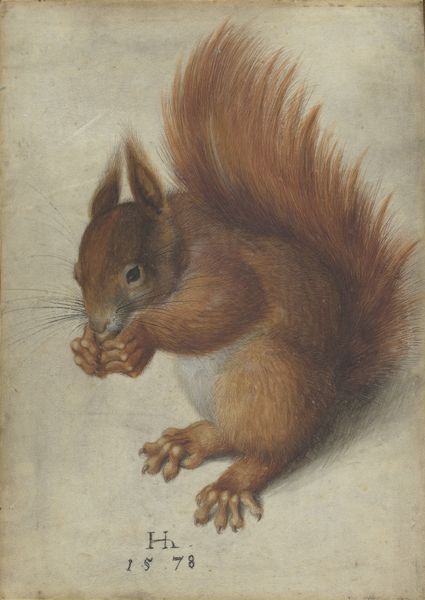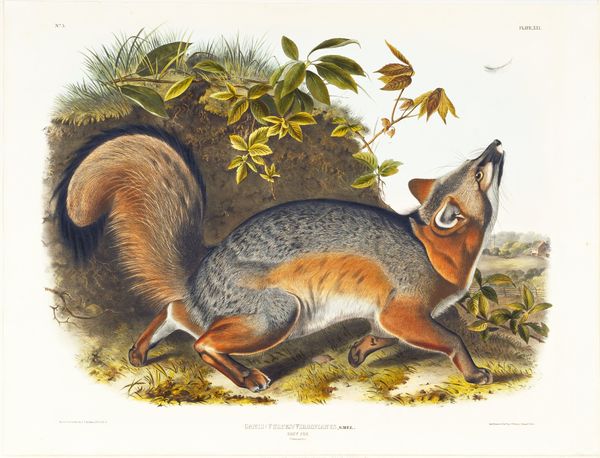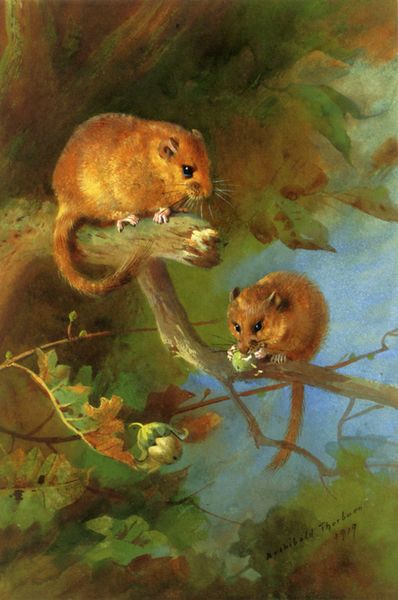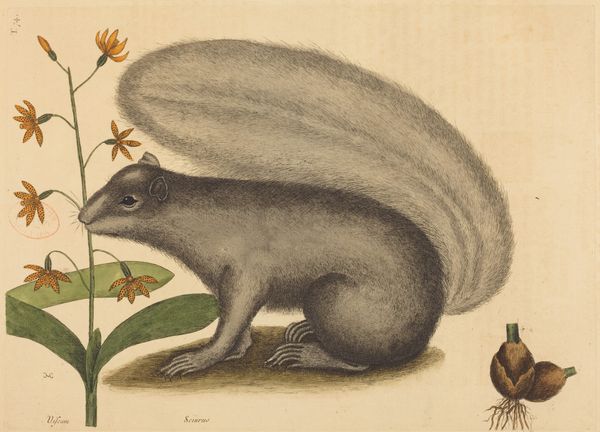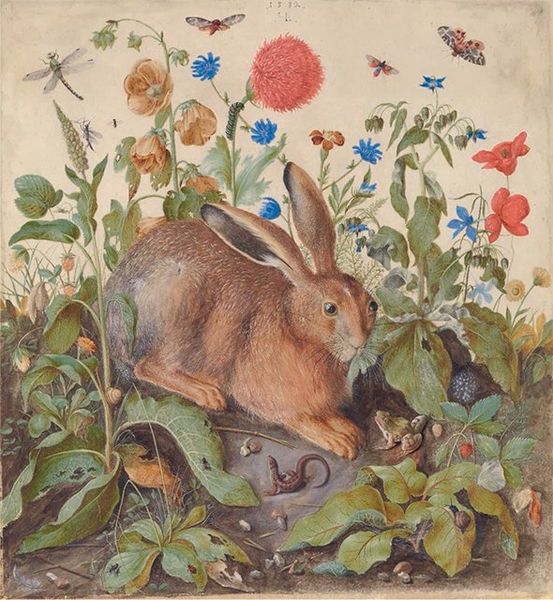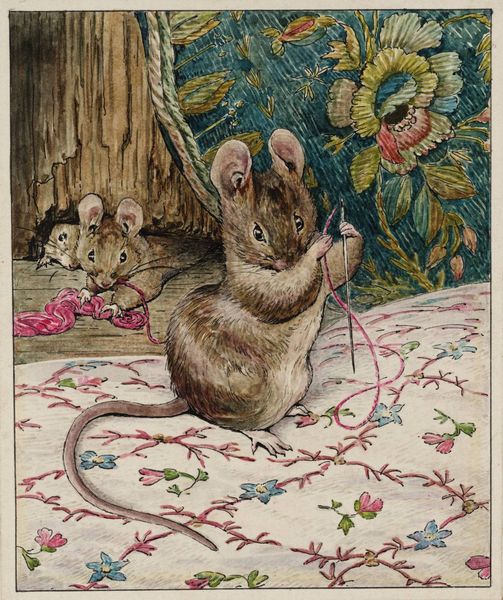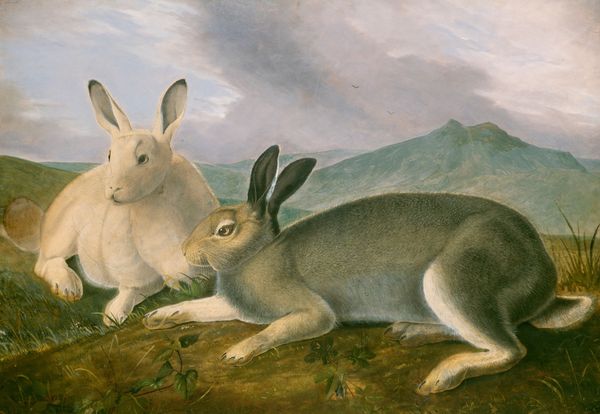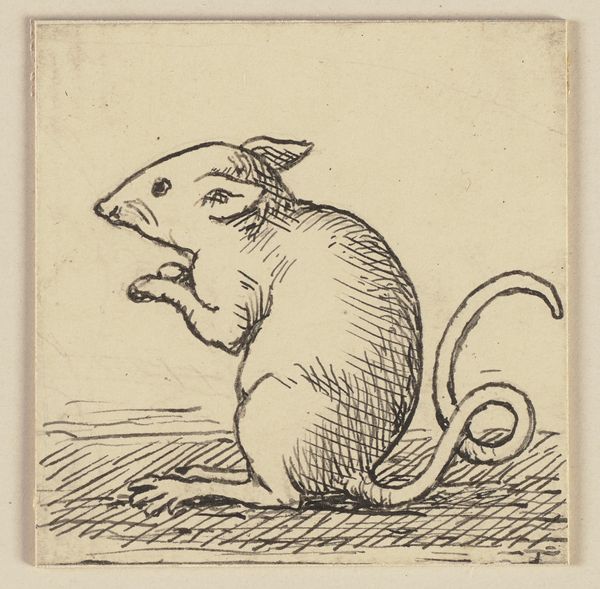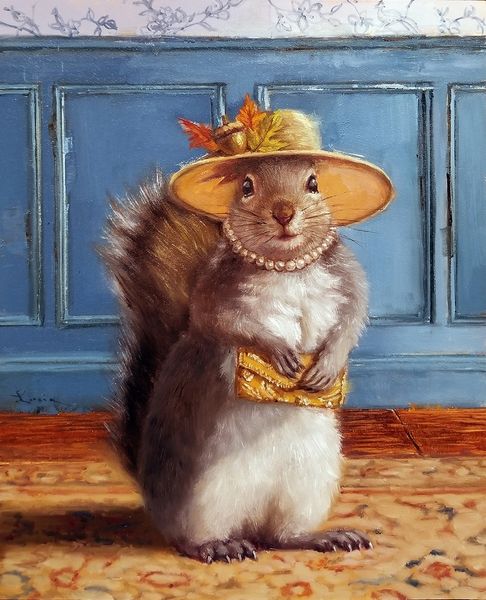
drawing, watercolor
#
drawing
#
charcoal drawing
#
watercolor
#
animal portrait
#
animal drawing portrait
#
northern-renaissance
#
watercolor
Copyright: Public domain
Curator: This is "Two Squirrels," a watercolor and charcoal drawing made around 1492 by Albrecht Dürer. The piece currently resides here at the Albertina in Vienna. What strikes you most when you first see this work? Editor: The sheer tenderness, actually. They appear so docile, and the execution is incredibly gentle. It’s a far cry from the grand historical dramas usually associated with the Renaissance. There's a quiet intimacy. Curator: It is interesting that you pick up on this, particularly in considering the history of depictions of animals; squirrels in art, especially in the Renaissance, carry considerable symbolism. Often, a squirrel with a chain could signify captivity or restraint. Editor: I noticed the squirrel in the back has a collar, not a chain per se, but certainly restrictive. Are we meant to read this as some veiled commentary on class or social hierarchy, perhaps within Dürer’s Nuremberg? The dynamic of one collared, and the other not, feels… pointed. Curator: Exactly! Dürer, positioned on the cusp of immense social change, would likely be grappling with these concepts. What looks like simple naturalism could instead be loaded with messages about agency, domesticity, and even servitude. Consider how the crisp details might also elevate animals and represent society. Editor: So, we’re meant to ponder the "natural" world versus the constructed social constraints of humanity, represented through these little rodents? I suppose it is in keeping with that era’s obsession with allegories. Look how intently one nibbles a nut, its paws delicately clasped around the prize. The juxtaposition is pretty evident when it comes to the treatment of animals then. Curator: The seemingly mundane aspects highlight those power dynamics further. It compels us to critically reassess the era and its legacy, making us reflect on freedom. Editor: And those symbols that Dürer imbued transcend their original setting. We can extend these conversations to explore human intervention in nature. Curator: Absolutely. Dürer gifts us more than just two squirrels, it really makes us engage with questions of agency. Editor: The more I look at these squirrels, the more I can't ignore the visual metaphors layered beneath their furry exteriors. It prompts a renewed examination of cultural control in art.
Comments
No comments
Be the first to comment and join the conversation on the ultimate creative platform.
